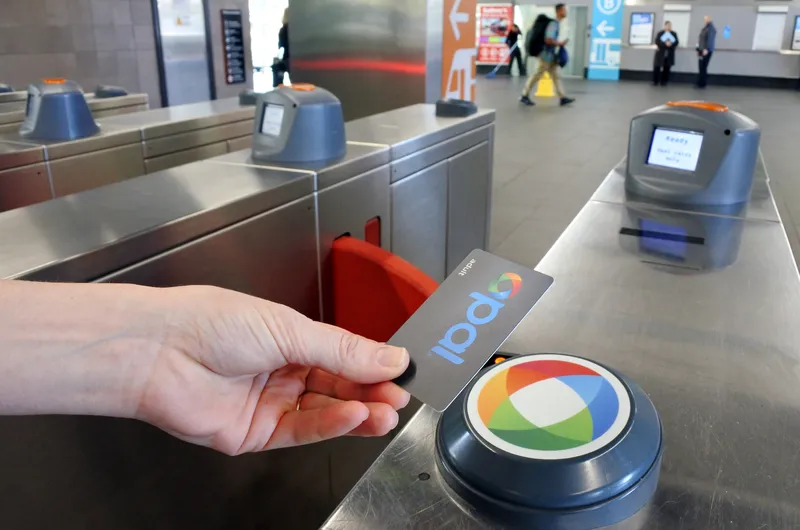
As Mobility as a Service starts to move into the mainstream of transport planning, David Crawford compares European and North American initiatives.
Mobility as a Service (MaaS) is a concept fast gaining traction on both sides of the Atlantic as a way of giving travellers digital multimodal one-stop shops and journey planning tools as an alternative to private car use. Planned delivery methods include subscription-based travel packages in Europe, and 'mobility aggregator' apps, including employee commute benefits, in the US.
Helsinki, the Finnish capital, has just kicked off the pan-European MaaS Alliance - formally unveiled at the 2015
Funded by the Conference of European Directors of Roads and seven of its national groups, the project is closely investigating business models and payment options. One could be an all-in monthly subscription for a batch of travel services.
- Free public transport within the user's home city;
- Up to 100km of local taxi use;
- Up to 500km of car rental; and
- Up to 1,500km of national public transport use
An alternative package could include shared taxis with a guaranteed wait of 15 minutes maximum from making a mobile phone call. The Alliance believes economies of scale will bring prices down.
Users, says Hietanen, “will receive a high-class service at a competitive price.” He predicts that transport is about to be hit by a "tsunami wave" of change on a par with the digital revolution in communications. “Soon, commuters will be able to purchase mobility plans as they would a mobile phone service.”
Transport App
One convert, 25 year-old transportation engineer Sonja Heikkilä, completed her master’s thesis on MaaS while employed by the Helsinki municipality. Now working for Finnish innovation funding agency Tekes, she is developing her vision of a real-time marketplace where travellers can choose between transport providers, their services distilled into an app, and piece together the fastest or cheapest journey.One option could be a minibus shuttle combined with city biking and ride-sharing which would “all but eliminate the need for cars. A single app would allow planning of the entire route.” MAASiFiE is also investigating the scope for combining passenger and freight transport operations, to rationalise urban deliveries and make rural distribution more cost-effective.
It is the first Pan-European MaaS project, but the concept is already being developed in national pilots across the continent. These include Sweden's Gothenburg-based UbiGo single-invoice travel app - which won the
Again, within the EU's €80bn HORIZON 2020 research and innovation initiative, which started in 2014, MaaS is a predefined topic in the 2016-2017 'Smart, green and integrated transport' programme. This ensures, VTT project coordinator Jenni Eckhardt told ITS International, that it will form part of EC-funded projects “in the near future”.
VTT is building on momentum gained during the 2014
In the US
A fast-developing MaaS project under way in California's San Francisco Bay Area, has a more employment-centric approach. It sees 'mobility aggregator' smartphone apps as the 'missing pieces' in a jigsaw puzzle of ongoing efforts aimed at reducing car dependency through a real-time travel marketplace.
Specific targets include freeing up in excess of 1050ha of surface parking for more productive uses and a 15% reduction in vehicle/km travelled by 2035.
Based in the eponymous innovation hub in the south of the Bay Area, the Silicon Valley Joint Venture aims to use data to ‘dissolve the boundaries’ between modes. It is developing methods of capturing data on passenger car movements, conventional public transport, taxis, bike-, ride- and car-sharing, van pooling, electric bike and scooter renting, and parking – and available payment options.
It is also building on the widespread employer-provided incentives in the region which includes payroll subsidies and public transit passes as well as private shared transport in the form of Wi-Fi equipped coaches and last-km shuttle buses from transit stops.
Numbers of company-run shuttles have risen sharply in recent years, reflecting levels of crowding on public transit. The JV is currently working with employers on developing software specifications that will integrate data on their services, and making commitments to stage internal workforce feasibility studies.
In the conventional public transport sector, the JV is having to deal with the two dozen operators currently serving an 122km2 Bay Area - each with their own capital planning and investment programmes, timetables, fares and route maps. The result is the most complicated transit set-up in the US, where most conurbations have a single dominant operator. Even the largest Bay Area provider — the San Francisco Municipal Transportation Agency (SFMTA) — carries only 45% of regional public transit journeys, making multi-operator trips the norm. Again, there are over 100 interchanges between the routes of two or more operators, and the number of these hubs is rising.
However, some involve several level changes, or needing to navigate crowded platforms to reach other services that can be 200m away. Meanwhile two-thirds of Bay Area commuters drive to work alone, causing major congestion on freeways and bridges.
Among achievements to date, in February 2015 a local software developer committed itself to the creation of a dedicated aggregator as an 'in-kind' contribution. In May a collaborative design sprint started prototyping.
JV executive director, smart mobility, Steve Raney told ITS International: “The state of integration in 2015 is quite weak. We expect 'good, better, best' in 2016, 2017, 2018. We think this is all going to play out at a fast pace.”
Ongoing programmes which the JV aims to support include the California Transportation Plan 2040. This envisages doubling levels of transit ridership and biking and halting major highway expansion.
Another is the San Francisco Planning and Urban Research Association’s (SPUR) public transit initiative which involves making all the available offers operate as if they were a single system. SPUR is responding to fears that the area's economic performance is being put at risk by the fragmentation of its public transit offer.
At the same time, cities within the region are starting to plan new housing and employment-generating schemes around public transport, rather than car-based, access, in line with the growing US practice of transit-oriented development (TOD). Currently, 75% of jobs in the area are within less than 1km of a freeway ramp.
But these cities face the issue of coordinating their schemes with the services of multiple operators. Strategies being promoted by SPUR include marketing transit offers under a single brand (and ultimately a single web interface), developing additional interchanges, standardising fares and creating regional network passes to optimise use.
Other initiatives include encouraging mergers of operators and creating a regional fund to support new fare products and revenue-sharing agreements.
Its breadth of vision makes SPUR a natural partner for MaaS. Meanwhile, the JV is actively exchanging ideas and information with the European MaaS Alliance, with a project in the German capital, Berlin, on the drawing board.
Silicon Valley
Silicon Valley Joint Venture originated in 1993, when the area's hi-tech industries found themselves facing strong competition from other areas of the US and more widely. The response was to reinvent itself at both business and civic levels as a 'competitive region'.
In February 2015, the Joint Venture Climate Prosperity Program set up its collaborative MaaS initiative with the Californian cities of Palo Alto and San Jose, and the independent Santa Clara Valley Transportation Authority, which is also a local congestion management authority.









